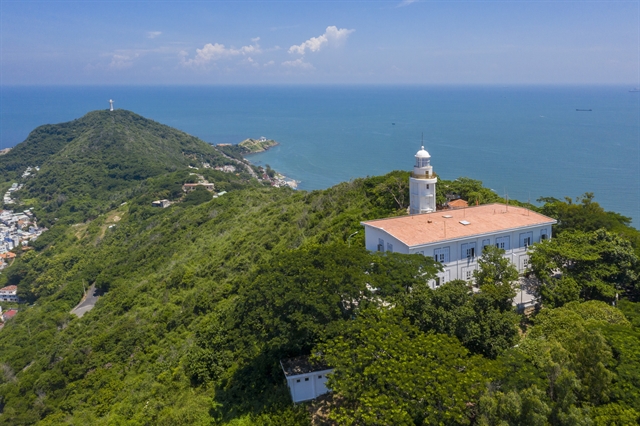The southeastern region, which comprises of HCM City, Bà Rịa-Vũng Tàu, Tây Ninh, Bình Phước and Bình Dương provinces, is striving to promote tourism by developing strong products, increasing connectivity, and forming new tours.
HCM CITY – The southeastern region, which comprises of HCM City, Bà Rịa-Vũng Tàu, Tây Ninh, Bình Phước and Bình Dương provinces, is striving to promote tourism by developing strong products, increasing connectivity, and forming new tours.

Lighthouse and Statue of Jesus Christ inTao Phùng mountain are two attractions that attract many tourists when coming to Vũng Tàu city. VNA/VNS Photo
In the regional development masterplan for the 2021 – 2030 period, with a vision to 2050, the tourism sector is envisioned to develop in a professional, modern, and quality direction, and be highly competitive.
Specifically, HCM City and Bà Rịa-Vũng Tàu are defined to be the driving force for regional tourism development, while Vũng Tàu city will be turned into a high-quality international-class tourism centre.
The masterplan also sets forth main measures of strengthening regional links to promote and improve tourism development efficiency based on outstanding resources and connected transportation systems; and develop inter-provincial and inter-regional tourism routes linked with unique local products.
Last year, the six southeastern localities welcomed over 65 million tourists, accounting for 54% of the country’s total. However, experts and managers agreed that the region still holds a lot of potential that has yet to be tapped fully.
HCM City, as the nucleus and growth pole of the region, is promoting the development of its advantageous economic sectors, including tourism and services. From its advantage of being a special urban area with diverse natural and cultural tourism resources, the city continues to improve quality and diversify products, with focus on local unique ones.
According to Vice Chairman of the municipal People’s Committee Nguyễn Văn Dũng, the city is aiming to welcome 39 million domestic visitors and over 7 million international tourists by 2025. By 2030, tourism will truly become its key economic sector, thus helping turn the city into the leading tourist centre in Southeast Asia, and a classy, attractive and highly competitive tourist destination not only domestically but also regionally and internationally.
The municipal Department of Tourism said that recently, it has developed and released a handbook of the city’s typical tourism products which gives visitors suggestions about traveling to cultural and historical destinations, river cruises, experiencing urban life, enjoying cuisine, and exploring suburban areas, mangrove ecosystems, and urban agriculture.
In the first half of 2024, the metropolitan is estimated to serve over 17 million domestic and over 2.67 million foreign tourists, and enjoy a year-on-year revenue growth rate of 14.6 per cent.
Vice Chairman of the People’s Committee of Bà Rịa-Vũng Tàu Province Lê Ngọc Khánh said that the province - home to Côn Đảo island - is Việt Nam's renowned spiritual tourist destination, and has sent delegations to other localities in the region to seek ways to boost tourism connectivity, and form cultural, historical, spiritual, and island tours.
Vice Chairwoman of the Bình Phước provincial People's Committee Tran Tuyet Minh pointed out that with the Bù Gia Mập National Park and its location bordering Cambodia, Bình Phước has a lot of potential for tourism development, and wants to join the whole region to further develop its tourism. It is positioned as a gateway connecting the Central Highlands region with HCM City and southeastern provinces, and its advantage of possessing many historical and cultural relic sites.
The locality is striving to welcome 1.7 million visitors by 2025, of whom international visitors will account for 3.2 - 4 per cent; and increase the length of stay in the province to an average of 1.15 days/visitor. – VNA/VNS